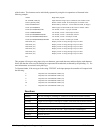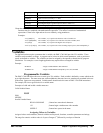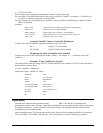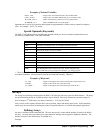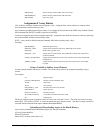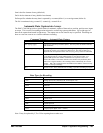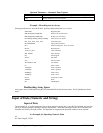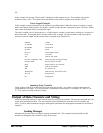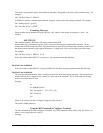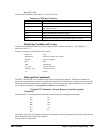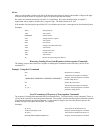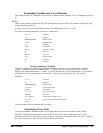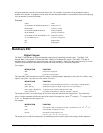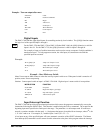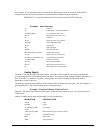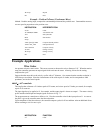
162 • Chapter 7 Application Programming DMC-1700/1800
Text strings are specified in quotes and variable or array data is designated by the name of the variable or array. For
example:
MG “The Final Value is”, RESULT
In addition to variables, functions and commands, responses can be used in the message command. For example:
MG “Analog input is”, @AN[1]
MG “The Gain of X is”,
_GNX
Formatting Messages
String variables can be formatted using the specifier, {Sn} where n is the number of characters, 1 thru 6. For
example:
MG STR {S3}
This statement returns 3 characters of the string variable named STR.
Numeric data may be formatted using the {Fn.m} expression following the completed MG statement. {$n.m}
formats data in HEX instead of decimal. The actual numerical value will be formatted with n characters to the left of
the decimal and m characters to the right of the decimal. Leading zeros will be used to display specified format.
For example:
MG “The Final Value is”, RESULT {F5.2}
If the value of the variable RESULT is equal to 4.1, this statement returns the following
:
The Final Value is 00004.10
If the value of the variable RESULT is equal to 999999.999, the above message statement returns the following:
The Final Value is 99999.99
The message command normally sends a carriage return and line feed following the statement. The carriage return
and the line feed may be suppressed by sending {N} at the end of the statement. This is useful when a text string
needs to surround a numeric value.
Example:
#A
JG 50000;BGX;ASX
MG “The Speed is”, _TVX {F5.1} {N}
MG “counts/sec”
EN
When #A is executed, the above example will appear on the screen as:
The speed is 50000 counts/sec
Using the MG Command to Configure Terminals
The MG command can be used to configure a terminal. Any ASCII character can be sent by using the format {^n}
where n is any integer between 1 and 255.
Example:



